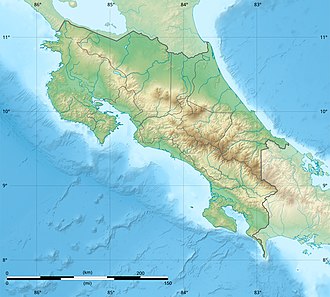This article needs additional citations for verification .(November 2013) |
| Piedras Blancas National Park | |
|---|---|
 Piedras Blancas National Park area. | |
| Location | Puntarenas Province, Costa Rica |
| Nearest city | La Gamba |
| Coordinates | 8°42′00″N83°15′40″W / 8.7°N 83.261°W [1] |
| Area | 34,642 acres (14,019 ha) |
| Established | 17 July 1991 |
| Governing body | National System of Conservation Areas (SINAC) |
Location in Costa Rica | |
Piedras Blancas National Park is a national park part of the Osa Conservation Area. It is found in the Puntarenas Province of southern Costa Rica near the town of La Gamba. It protects rainforests and beaches near the Golfo Dulce on the Pacific Coast. It used to operate as part of the Corcovado National Park called the Esquinas Sector from 1991 before becoming a separate park in 1999. Until the mid-1990s, much of the forest in the park was severely endangered by logging.
Contents
The rugged mountains and watersheds of the Esquinas and Piedras Blancas rivers are covered in dense evergreen forest that is home to a number of rare tropical trees and the habitat of many species of birds, mammals and reptiles. Hunting has been a problem, but the number of park rangers was increased from 6 to 16 between 2005 and 2007, and poaching has decreased.
Some of the park has remained in private hands, however a charitable organization Regenwald der Osterreicher (Rainforest of the Austrians) has been raising funds and purchasing these, which up to 2008 had moved 37 km2 (14 sq mi) of land in the area into public ownership. The Costa Rican government, the hydroelectric company Tenaska (carbon offset joint implementation), The Nature Conservancy and the Gordon and Betty Moore foundation have also purchased land in Piedras Blancas, bringing the total protected area within the park to more than 80%.
